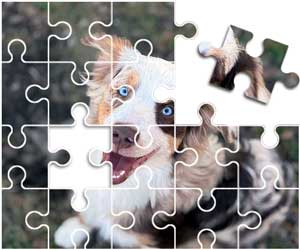
Understanding Littermate Syndrome In Australian Shepherds
Littermate syndrome may not be a common concern for most pet owners, but the professionals agree that it is a very real issue that should not be ignored. While it may be tempting to bring home two dogs from the same litter, it is not always a good idea. Siblings who are too close can form too much of a bond, to the point where it prevents them from developing into well adjusted adults and being accepting of their humans or of other dogs.
While this kind of excessive bonding doesn't happen with every pair, genetics do seem to play some role. It can happen in almost any breed, from active working breeds like the Australian Shepherd to more normally laid back breeds. It is common enough that many experts advise against adopting two pups from the same litter. Often, the extreme bonding can lead to training and socialization issues that may cause unhappy adopters to return one pup.
Although many pups will have issues with training, you can usually spot the common signs of littermate syndrome pretty easily. These include a fear of strangers, both human and canine; a fear of unfamiliar stimuli; a high level of anxiety when separated even for a very short amount of time and a failure to learn basic obedience commands. In short, the dogs will be more focused on each other and pay little or no attention to you.
Also, bonded littermates will often take "leader" and "follower" roles, with one sibling taking the lead in most situations, while the other just happily trots along behind. That might not seem like a big problem when they are young but it can become more difficult when they grow up and the "follower" fails to become a well adjusted adult.
Another problematic side effect of littermate syndrome is bullying. Once they develop the dominant and passive roles that can lead to what may seem like non-stop fighting between them. In some cases this bullying can lead to full on aggression, which is usually the point at which frustrated owners end up bringing one sibling back to the breeder or shelter because they fear for its safety after seeing it bullied by its sibling.
What Can You Do To Avoid The Problems Of Littermate Syndrome?
If you do adopt a pair of littermates there are some things you can do to help avoid these issues. Start by keeping each pup in his or her own crate at night. It is important to create some distance between them so that each dog can develop on their own and learn to pick up obedience commands. The crates should also be placed in bedrooms so that each pup can learn to form bonds with humans as well as each other.
Along with separate crating, you can reduce the effects of this syndrome by making sure you give your dogs both separate training and separate play sessions. Again, the idea is to allow each dog to develop on their own and to form a bond with humans and other dogs. And make sure to lavish attention and affection on each pup as you work with them separately, in order to reinforce that bonding.
Even though the extreme bonding seen in littermate syndrome is not a given with every pair, experts still suggest that you avoid adopting two pups from the same litter. In fact, most experts recommend adopting one pup at a time and not adding a second canine companion until the first has been able to mature and settle down a bit. That way the training process will be easier on all of you.
Have Dog Training Questions?
Check out these introductory dog training videos...
I want my dog to stop being aggressive.
I want some help training my new puppy.
I want my dog to stop barking at everything.
Get Australian Shepherd Info, Website Updates, Special Offers, and Cartoons...
FREE GIFT
You'll also receive a free copy of the ebook
My Everyday Dog Training Tools
by professional dog trainer Daniel Abdelnoor, "Doggy Dan"












